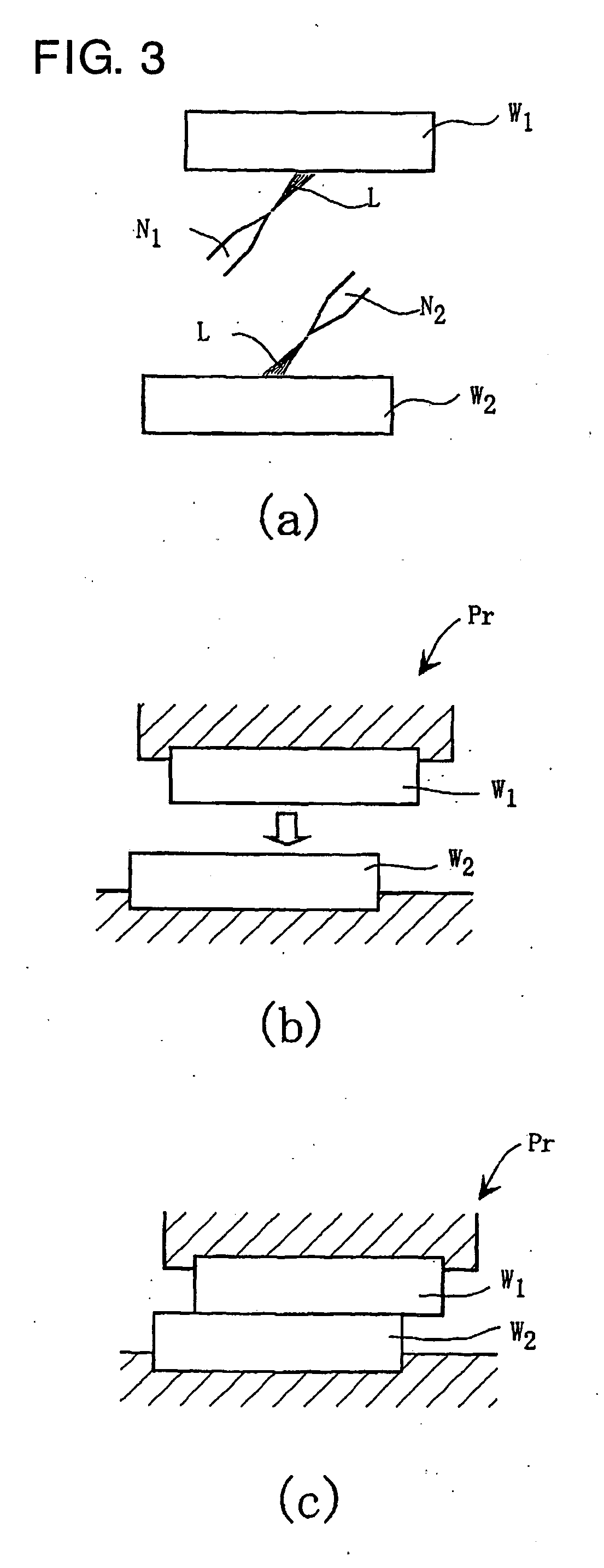Joining method and apparatus
a jointing method and jointing technology, applied in the direction of slendering apparatus, manufacturing tools, cooking vessels, etc., can solve the problems of strain, distortion or material deterioration of the members to be joined, incur equipment costs, and complicated and tiresome joining steps, so as to achieve high quality joining, practical cost, and avoid applying a high temperature or a great compressive load
- Summary
- Abstract
- Description
- Claims
- Application Information
AI Technical Summary
Benefits of technology
Problems solved by technology
Method used
Image
Examples
example
[0070] Two 0.6 mm thick copper plates were kept in contact with formic acid as an organic acid for 10 s by use of the apparatus described in FIG. 5, whereby the copper plates were cleaned. Two copper plates with their metal surfaces exposed were used as members W1, W2 to be joined, and pressure-welded at a temperature of 120° C., as shown in FIG. 11, to form a lap joint. The pressure welding was performed, with a contact surface pressure P being varied in the range of 5 to 50 MPa. The resulting joint was pulled in longitudinal directions to conduct a shear fracture test. The relationship between the contact surface pressure P and the shear joining strength p is shown in FIG. 12. For comparison, data are also plotted for joined specimens which were prepared by joining under the same conditions, except that sulfuric acid for use in ordinary acid pickling was used as a surface treatment liquid for pretreatment before joining in FIG. 12.
[0071] In the Example embodying the present inven...
PUM
| Property | Measurement | Unit |
|---|---|---|
| temperature | aaaaa | aaaaa |
| thickness | aaaaa | aaaaa |
| temperature | aaaaa | aaaaa |
Abstract
Description
Claims
Application Information
 Login to View More
Login to View More - Generate Ideas
- Intellectual Property
- Life Sciences
- Materials
- Tech Scout
- Unparalleled Data Quality
- Higher Quality Content
- 60% Fewer Hallucinations
Browse by: Latest US Patents, China's latest patents, Technical Efficacy Thesaurus, Application Domain, Technology Topic, Popular Technical Reports.
© 2025 PatSnap. All rights reserved.Legal|Privacy policy|Modern Slavery Act Transparency Statement|Sitemap|About US| Contact US: help@patsnap.com



